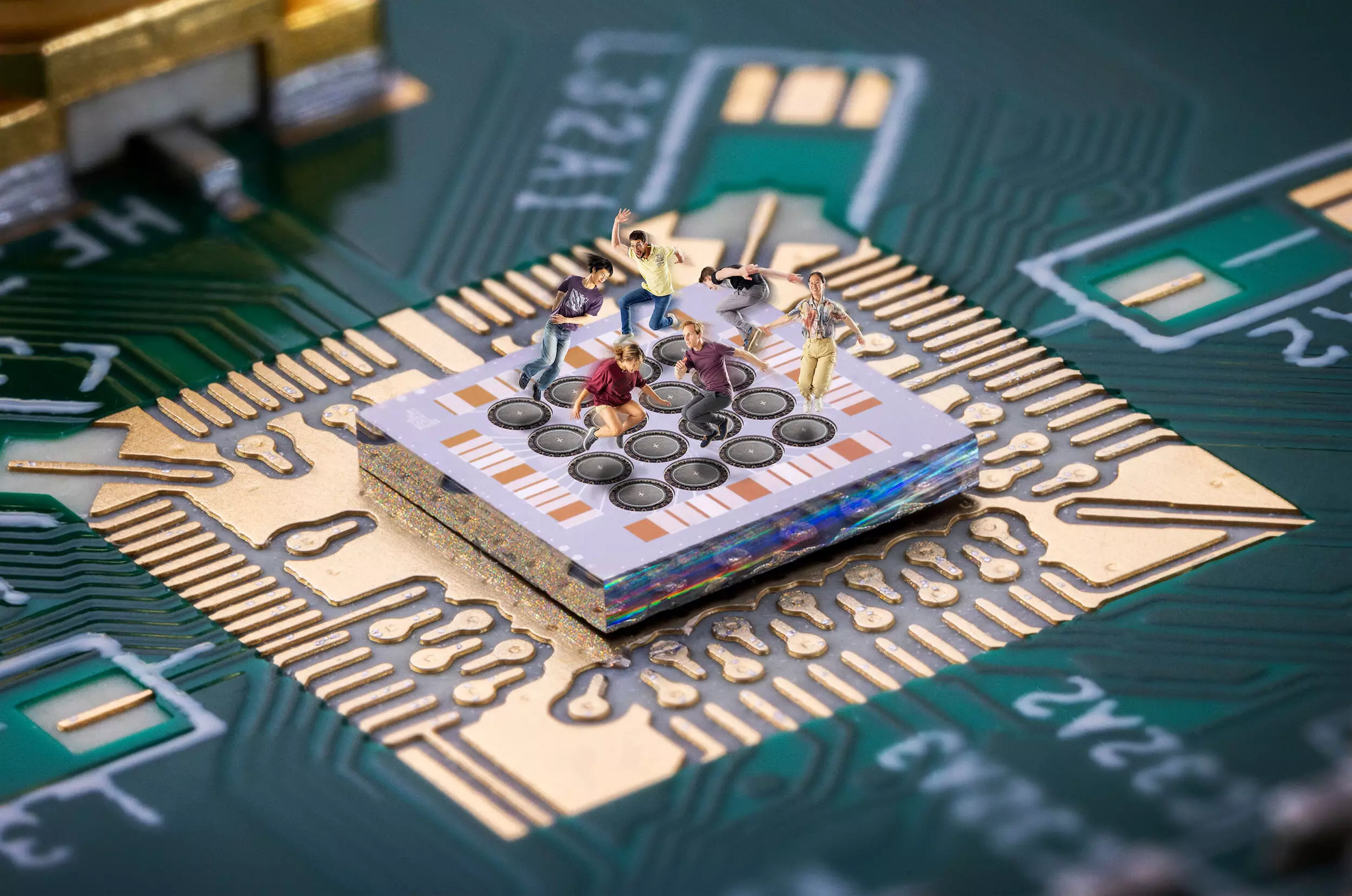In a significant stride within the realm of quantum computing, researchers from QuTech have unveiled a revolutionary method for manipulating qubits, known as somersaulting spin qubits. This groundbreaking technology promises to enhance the efficiency of controlling expansive arrays of semiconductor qubits, thus paving the way for the next generation of quantum processors. Their findings, recently published in two prestigious journals—Nature Communications and Science—shed light on the potential to bridge the gap between theoretical propositions and experimental realization, which has languished for over two decades.
The pioneering work of Loss and DiVincenzo in 1998 laid the theoretical groundwork for using quantum dots to facilitate quantum computation, suggesting that the hopping of spins could serve as a foundation for qubit logic. Despite the promising outlook, practical implementations remained elusive until now. The researchers at QuTech have not only demonstrated the feasibility of these ‘hopping gates’ but have done so with high-performance metrics that exceed prior expectations.
From Theory to Practice: The Evolution of Qubit Technology
The method that QuTech has adopted leverages quantum dots to host qubits, a trend echoed in research labs worldwide. Traditionally, controlling the spin of an electron in these quantum dots required intricate microwave signals alongside substantial magnetic fields. However, QuTech’s innovative approach does away with the complexity of microwave control by utilizing baseband signals along with more manageable magnetic fields. This simplification holds the potential to revolutionize the control electronics necessary for future quantum processors, making them more accessible and easier to operate.
Conversely, the experiment hinges upon the concept of spin hopping between quantum dots. The initial proposal by Loss and DiVincenzo involved a specific type of magnet that proved difficult to implement reliably in a practical setting. QuTech’s team has ingeniously utilized germanium, a versatile semiconductor, which inherently allows for effective spin rotations. It’s a remarkable twist in the ongoing narrative of quantum computing, demonstrating that innovative materials can lead to unexpected breakthroughs.
Visualizing Quantum Mechanics: The Trampoline Park Analogy
To comprehend the mechanics of somersaulting spins, envision an analogy built around a trampoline park. In this scenario, electrons behave like individuals enjoying a jump on trampolines, each designated to its own platform. Typically, these “jumpers” have designated trampolines, but they possess the ability to leap to adjacent ones. The remarkable property of germanium transforms these hops into somersaults—every time an electron shifts from one quantum dot to another, it engages in a rotational motion that enhances control over its quantum state.
The researchers describe their developments using this vivid imagery, revealing that hopping qubits among quantum dots results in varying spin dynamics, akin to different experiences felt by trampolining individuals. This analogy not only simplifies complex quantum physics concepts but also makes them tantalizingly relatable.
Precision and Control: Advancements in Qubit Metrics
In an impressive display of control, QuTech researchers achieved the manipulation of two spins within a four-dot quantum system, showcasing their capability beyond mere hopping. What’s more, they extended their research into the complexities of multi-dot hop-and-somersault mechanisms, correlating it to individuals hopping and performing acrobatics across multiple trampolines. This ability is crucial for the future of quantum computing, where accuracy and precision in operating a larger pool of qubits are mandated for effective performance.
The variability observed during these hopping motions corresponds to unique angular rotations, necessitating deeper characterization and understanding. The QuTech team elucidated control routines that offer the ability to hop spins to any quantum dot within a ten-dot array, enabling assessments of fundamental qubit metrics in expansive systems. This newly acquired knowledge could be transformative, providing key insights into scalability, precision, and reliability of qubit configurations for large-scale quantum computations.
The Spirit of Collaboration: Achievement Through Team Effort
Principal investigator Menno Veldhorst emphasized the collective effort that culminated in this innovative achievement, reflecting on how teamwork facilitated the transition from theoretical concepts to a viable experimental framework. The perseverance exhibited by the team has birthed a tool that is now in widespread application across their collaborative group, thus catalyzing further innovations within the field.
The recognition of collaborative spirit in overcoming complex challenges resonates profoundly in the scientific community. It underscores the notion that groundbreaking advancements often emerge from the synthesis of diverse expertise and ideas. As QuTech continues to explore the vast potential of somersaulting spin qubits, the landscape of quantum computing appears increasingly promising, edging closer to the ultimate goal of achieving practical, scalable quantum technologies.

